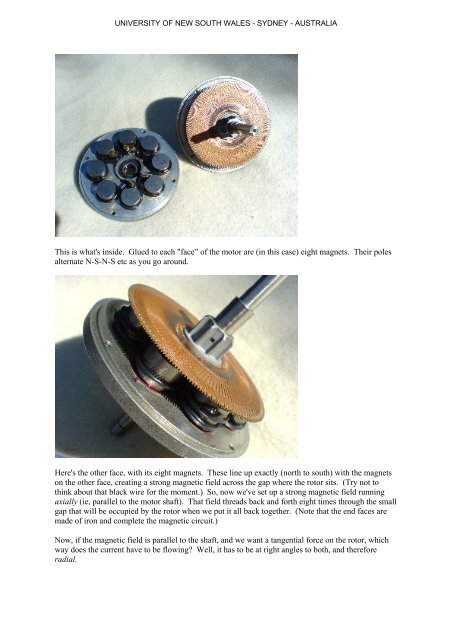How real electric motors work - School of Physics - The University of ...
How real electric motors work - School of Physics - The University of ...
How real electric motors work - School of Physics - The University of ...
You also want an ePaper? Increase the reach of your titles
YUMPU automatically turns print PDFs into web optimized ePapers that Google loves.
UNIVERSITY OF NEW SOUTH WALES - SYDNEY - AUSTRALIA<br />
This is what's inside. Glued to each "face” <strong>of</strong> the motor are (in this case) eight magnets. <strong>The</strong>ir poles<br />
alternate N-S-N-S etc as you go around.<br />
Here's the other face, with its eight magnets. <strong>The</strong>se line up exactly (north to south) with the magnets<br />
on the other face, creating a strong magnetic field across the gap where the rotor sits. (Try not to<br />
think about that black wire for the moment.) So, now we've set up a strong magnetic field running<br />
axially (ie, parallel to the motor shaft). That field threads back and forth eight times through the small<br />
gap that will be occupied by the rotor when we put it all back together. (Note that the end faces are<br />
made <strong>of</strong> iron and complete the magnetic circuit.)<br />
Now, if the magnetic field is parallel to the shaft, and we want a tangential force on the rotor, which<br />
way does the current have to be flowing? Well, it has to be at right angles to both, and therefore<br />
radial.
















